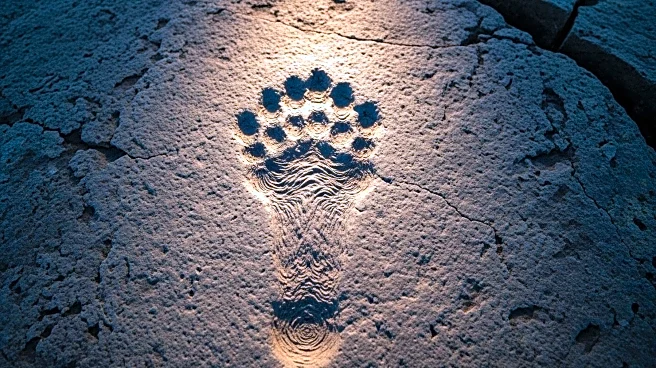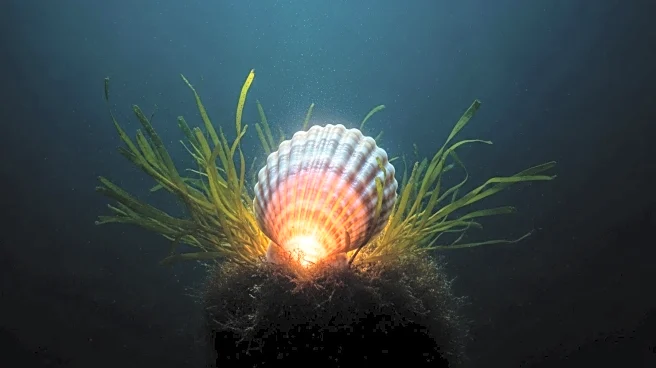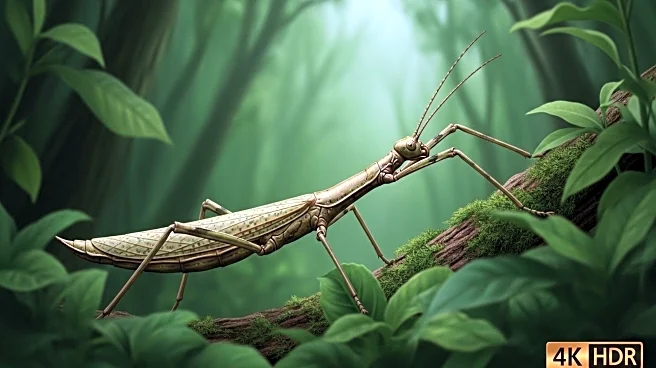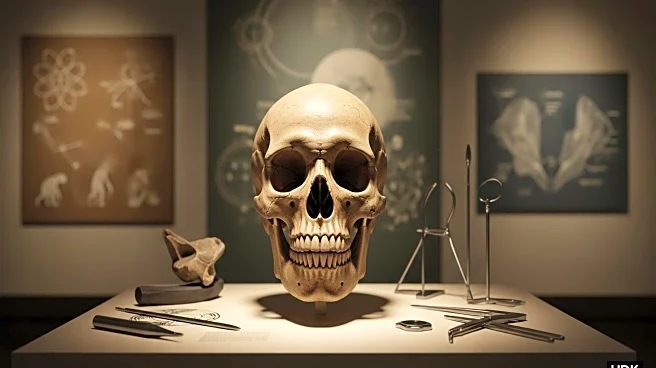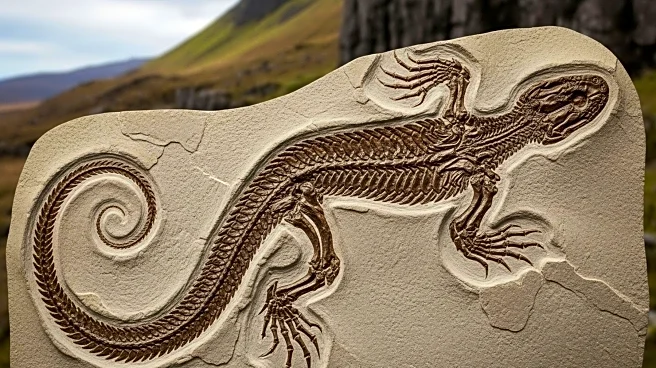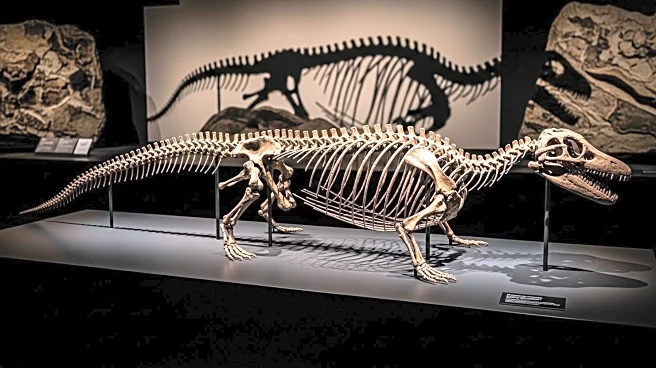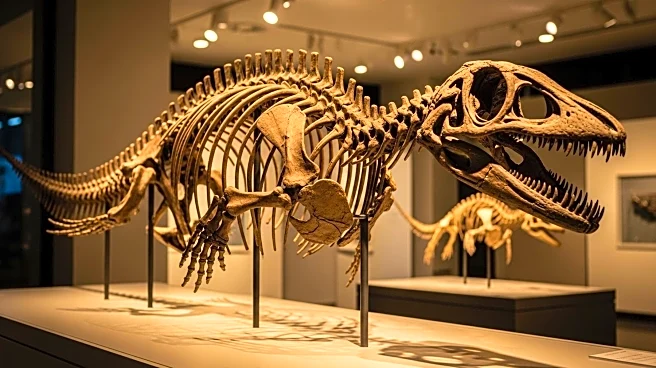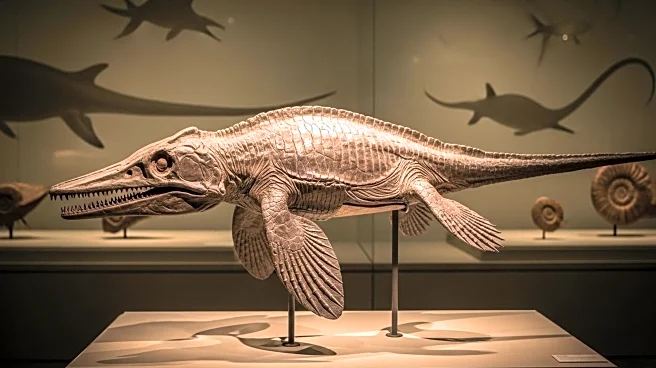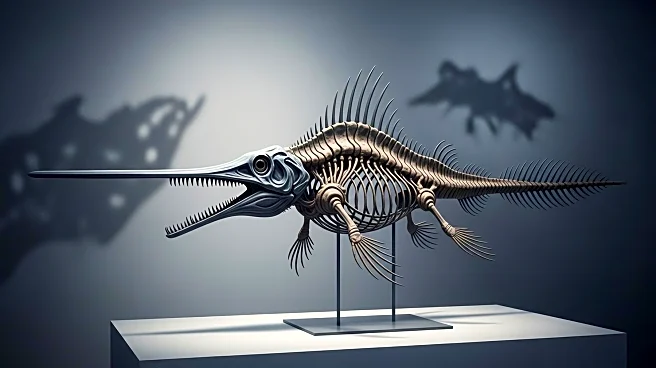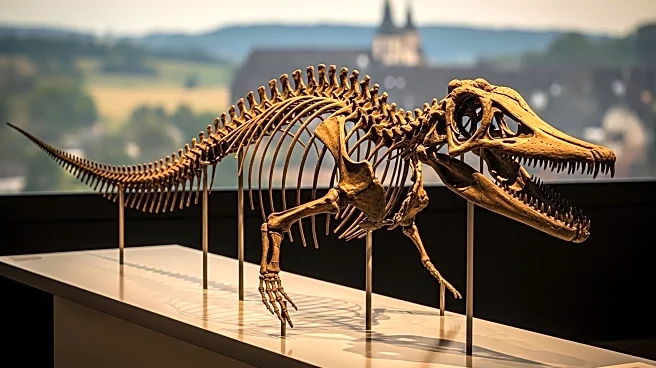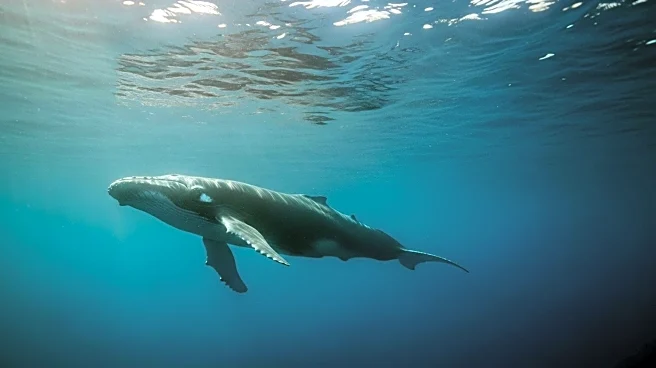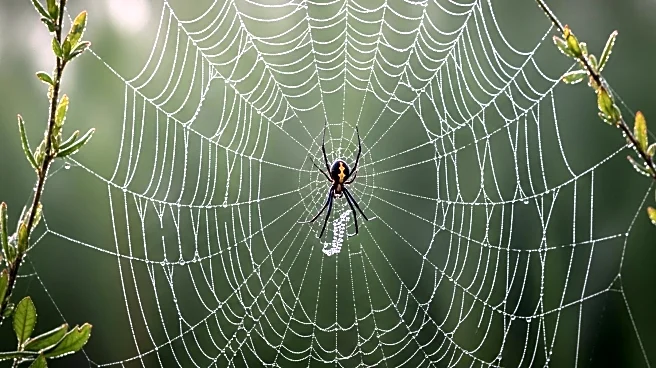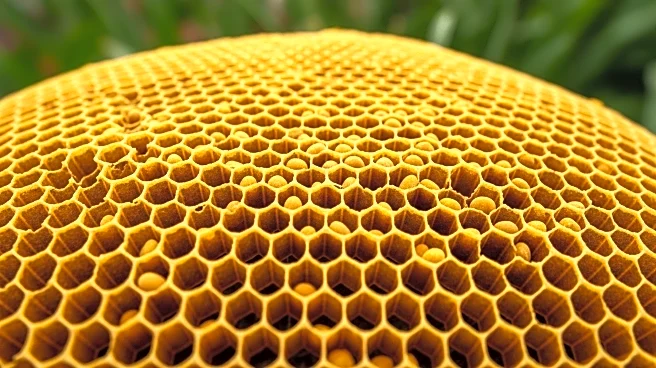What is the story about?
What's Happening?
A team of researchers, led by the American Museum of Natural History and including National Museums Scotland, has discovered a new species of Jurassic reptile on the Isle of Skye. The fossil, named Breugnathair elgolensis, meaning 'false snake of Elgol', was found near Elgol and is now part of the National Museums Scotland collection. This reptile, which lived approximately 167 million years ago, features snake-like jaws and teeth similar to modern-day pythons, yet retains the proportions and limbs of a lizard. The discovery, published in the scientific journal Nature, provides insights into the evolution of snakes from lizard-like ancestors.
Why It's Important?
The discovery of Breugnathair elgolensis is significant as it offers new evidence about the evolutionary history of snakes and lizards. This fossil could reshape scientific understanding of how snakes evolved from their lizard-like ancestors, highlighting primitive features that may have been present in early snake evolution. The research contributes to the broader field of paleontology by expanding knowledge of Middle Jurassic biodiversity and the evolutionary pathways of reptiles. It also underscores the importance of the Isle of Skye as a key site for Jurassic fossil discoveries.
What's Next?
Further analysis of Breugnathair elgolensis may provide additional insights into the evolutionary traits of early reptiles. Researchers might explore the implications of its primitive features on the understanding of predatory habits in extinct species. The fossil's inclusion in the National Museums Scotland collection allows for continued study and public education on Jurassic biodiversity. Future expeditions to the Isle of Skye could uncover more fossils, enhancing the scientific community's understanding of this period.
Beyond the Headlines
The discovery raises questions about the evolutionary processes that led to the development of snake-like features in reptiles. It challenges existing theories about the ancestors of snakes, suggesting they may have been more diverse than previously thought. This finding could influence future research directions in paleontology, particularly in the study of reptile evolution and adaptation.
AI Generated Content
Do you find this article useful?
